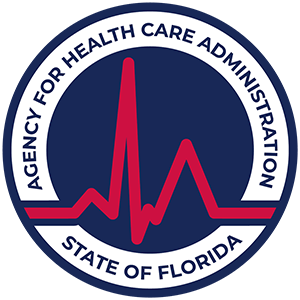How Long is Rehab?
Discover 'how long is rehab?' Unveil the factors, insurance coverage, and the impact on recovery success.
Understanding Rehab Duration
When it comes to rehabilitation for substance use disorders, one of the most common questions individuals have is 'how long is rehab?' The answer, however, is not so straightforward. The duration of rehab can vary greatly, depending on several factors such as the severity of the addiction, the presence of co-occurring disorders, and the individual's response to treatment. Rehab programs can range from as short as 28 days to as long as 12 months [1].

Factors Affecting Rehab Length
Several factors influence the length of rehabilitation programs. These include:
- Severity of Addiction: More severe addictions may require longer treatment durations to ensure comprehensive care and recovery.
- Presence of Co-occurring Disorders: Individuals with co-occurring mental health issues often benefit from extended treatment durations.
- Response to Treatment: The individual's progress and response to treatment can influence the length of the rehab program.
Importance of Individual Assessment
The decision regarding the length of stay in a rehab program should be based on a thorough assessment conducted by healthcare professionals to ensure individualized treatment plans [1]. This assessment typically considers the individual's treatment needs, goals, and the structure of the rehab program.
For adolescents and young adults, a duration of 60 to 90 days is recommended for optimal outcomes in rehab. For individuals with severe addiction or co-occurring mental health issues, longer stays in rehab programs, such as 6 to 12 months, are often recommended [1].
Importantly, research suggests that a minimum of 90 days in a rehab program can significantly enhance the chances of successful recovery from substance use disorders. Therefore, when asking 'how long is rehab?', it's essential to remember that longer treatment periods often lead to better outcomes, providing sufficient time for comprehensive treatment, stabilization, and relapse prevention.
Short-Term Rehab Programs
Short-term rehab programs are often the first step on the journey to recovery. These programs typically range from a few weeks to a month, providing individuals with an intensive period of treatment.
Overview of Short-Term Programs
Short-term rehab programs typically last around 28 to 30 days. However, the duration of these programs can vary depending on several factors, including the individual's treatment needs, goals, and the program's structure.
The following table provides a general timeline for different types of short-term rehab programs:
Structure and Intensity
Short-term rehab programs are designed to provide intensive treatment within a condensed time frame. These programs often involve daily or near-daily treatment sessions, combined with support and education to help individuals understand their addiction and develop coping strategies.
Inpatient rehab programs typically involve a residential stay at a treatment facility, where individuals receive round-the-clock care and support. These programs often include a combination of individual therapy, group therapy, medication-assisted treatment, and complementary therapies such as yoga or art therapy.
Outpatient rehab programs allow individuals to live at home while attending treatment sessions at a clinic or treatment center. These programs can be just as intensive as inpatient programs, but they offer more flexibility for individuals who need to maintain their work or family responsibilities during treatment.
Condition-specific rehab programs, such as those for multiple sclerosis, typically involve a customized treatment plan that addresses the unique challenges associated with the condition. These programs may include physical therapy, occupational therapy, and other specialized treatments.
Athlete rehabilitation programs are designed to help athletes recover from injuries and return to their sport. These programs typically involve a combination of physical therapy, strength training, and sport-specific exercises.
While short-term rehab programs can be highly effective, it's important to remember that recovery is a long-term process. Continued care and support are essential for maintaining the gains made during treatment and preventing relapse.
Long-Term Rehab Programs
Long-term rehab programs are an essential part of the recovery journey for many individuals dealing with addiction. These programs, often extending from six months to a year, provide comprehensive treatment that caters to the diverse needs of individuals with severe addiction or co-occurring mental health issues.
Benefits of Extended Treatment
Extended stays in rehab programs offer numerous benefits, making them a preferred choice for many individuals grappling with addiction. According to Conifer Park, extended treatment periods allow for comprehensive treatment, stabilization, and relapse prevention.
Moreover, long-term rehab programs have been associated with better clinical outcomes and lower rates of relapse. According to Northstar Behavioral Health, treatment gains are more likely to be sustained and relapse prevented with longer durations of continuing care. The recommended duration of continuing care extends for a minimum of 3 to 6 months, and up to 12 months for robust recovery.
Other advantages of longer rehab programs include more time for recovery, better engagement in the treatment process, and increased chances of achieving better outcomes after leaving rehab. These advantages highlight the importance of extended treatment when considering 'how long is rehab?' for individuals dealing with addiction issues.
Tailored Approach for Severe Cases
For individuals with severe addiction or co-occurring mental health issues, long-term rehab programs are often recommended. These programs provide a tailored approach to treatment, catering to the unique needs of each individual.
The extended duration of these programs allows individuals to fully engage in therapy, gain insight into their addiction, develop coping skills, and establish a foundation for long-term recovery. This is crucial, as the average length of stay in drug rehab plays a significant role in the overall treatment process [3].
Furthermore, continuing care, including outpatient treatment and participation in self-help groups like Alcoholics Anonymous (AA) or Narcotics Anonymous (NA), has been associated with increased rates of abstinence and improved outcomes at 6 and 12 months after primary treatment discharge.
By focusing on the unique needs of each individual and providing comprehensive, long-term treatment, these programs can significantly enhance the chances of recovery and long-term sobriety for individuals dealing with severe addiction issues.
Insurance Coverage for Rehab
While pondering 'how long is rehab?', it's crucial to understand that the duration of treatment can be influenced by insurance coverage. Insurance policies can cover a variety of rehab services, but the extent and duration of coverage can vary considerably.
Coverage Duration Variability
The duration of rehab coverage can differ significantly based on the individual's insurance plan. Some policies may cover 60 days of inpatient rehab, while others might extend to 90 days or more. Therefore, it's essential to thoroughly examine your insurance policy to understand the length of coverage available for rehab services.
Comprehensive Services Included
Insurance typically offers a comprehensive coverage plan for individuals seeking addiction treatment. This can include a range of rehab services such as detoxification, inpatient treatment, outpatient treatment, therapy, and medications [4].
However, despite this broad range of potentially covered services, insurance limitations can exist. These limitations might restrict the duration, type, or frequency of services covered, highlighting the importance of fully understanding insurance policies to avoid unexpected costs.
The insurance verification process for rehab can vary depending on the individual's insurance policy, with some plans covering specific treatment programs like an intensive outpatient program that certain locations offer.
The verification process involves steps such as initial contact to gather necessary information, contacting the insurance company to clarify coverage details, understanding the insurance response, and finalizing the verification process to document coverage details for the individual's rehab journey [4].
Understanding the specifics of insurance coverage is a crucial step in the journey towards recovery. By being aware of the extent and duration of coverage, individuals can effectively plan their rehab process and ensure they receive the support they need throughout their treatment.
Rehab Length and Treatment Success
Understanding the connection between the length of rehab and treatment success can provide necessary insights into the process of recovery.
Research on Treatment Durations
Research suggests that the duration of rehab plays a significant role in recovery success. According to Conifer Park, a minimum of 90 days in a rehab program can significantly enhance the chances of successful recovery from substance use disorders. For individuals with severe addiction or co-occurring mental health issues, longer stays such as 6 to 12 months are often recommended. These extended treatment periods allow for comprehensive treatment, stabilization, and relapse prevention.
Furthermore, NCBI Bookshelf indicates that treatment programs for substance abuse can vary in length and intensity, but a duration of treatment for 3 months or longer is often a predictor of a successful outcome. This underscores the importance of committing to a full course of treatment.
Predictors of Positive Outcomes
Longer treatment durations in addiction recovery lead to increased chances of achieving better outcomes after leaving rehab and avoiding relapse. According to a study by Northstar Behavioral Health, the length of stay in outpatient drug-free treatment is a significant predictor of positive post-treatment results, such as decreases in unemployment and crime rates.
Furthermore, longer lengths of stay in drug and alcohol addiction treatment have been associated with better clinical outcomes and lower rates of relapse. Treatment gains are more likely to be sustained and relapse prevented with longer durations of continuing care. It is recommended that continuing care should extend for a minimum of 3 to 6 months, and up to 12 months for robust recovery.
In summary, the question of 'how long is rehab?' has a complex answer. It depends on individual needs and circumstances, but evidence consistently shows that longer treatment durations lead to better outcomes. This information is crucial for individuals embarking on the recovery journey, as it emphasizes the importance of committing to a comprehensive treatment plan for a significant duration to enhance the chances of a successful recovery.
Continuing Care After Rehab
Rehabilitation from addiction is a journey that extends beyond the confines of a dedicated treatment facility. As we delve deeper into the question, "how long is rehab?", it's important to explore the significance of continuing care post-rehabilitation.
Importance of Post-Treatment Support
Continuing care, which can encompass outpatient treatment and participation in self-help groups like Alcoholics Anonymous (AA) or Narcotics Anonymous (NA), is a critical facet of a comprehensive rehabilitation plan. Such post-treatment support has been linked to increased rates of abstinence and improved outcomes at 6 and 12 months after primary treatment discharge, according to Northstar Behavioral Health.
Continued support aids in the maintenance of the progress made during rehab, affording individuals the opportunity to further develop coping skills, gain deeper insights into their addiction, and build upon the foundation for long-term recovery.
Sustaining Long-Term Recovery
The journey to recovery is a long-term commitment. Research indicates that patients who remain abstinent for two years are more likely to remain drug- and alcohol-free at ten years. Furthermore, a treatment episode duration of three months or longer often predicts a successful outcome [5].
This underscores the significance of an extended rehab program, which provides benefits such as more time for recovery, enhanced engagement in the treatment process, and increased chances of achieving better outcomes post-rehabilitation [5].
It's important to note that sustaining long-term recovery requires continuous effort, commitment, and support. A steadfast support system, healthy lifestyle adjustments, and ongoing therapy or counseling are crucial for maintaining sobriety and preventing relapse.
In conclusion, the journey to recovery is more than just a question of "how long is rehab?". It's a lifelong commitment that requires ongoing support, continuous effort, and the development of coping mechanisms to maintain long-term sobriety. The length of rehab and the subsequent continuing care program play a significant role in this journey, laying the groundwork for a successful recovery.














.svg)








